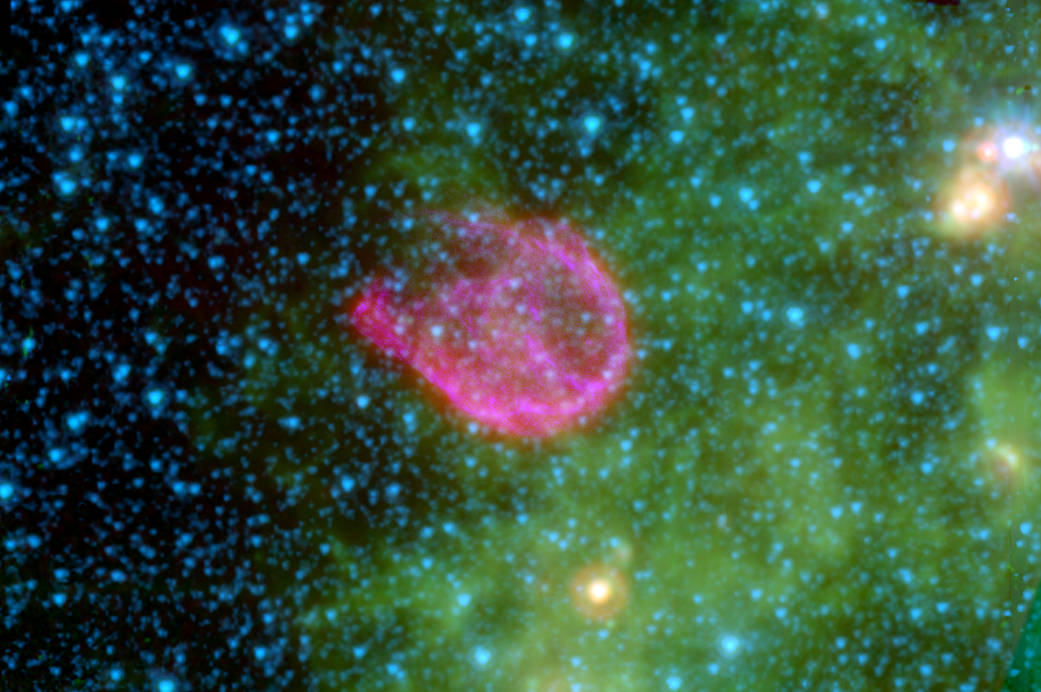Supernovas are the explosive deaths of the universe’s most massive stars. In death, these objects blast powerful waves into the cosmos, destroying much of the dust surrounding them.
This 2007 composite from NASA’s Spitzer Space Telescope and Chandra X-ray Observatory shows the remnant of such an explosion, known as N132D, and the environment it is expanding into. In this image, infrared light at 4.5 microns is mapped to blue, 8.0 microns to green, and 24 microns to red. Meanwhile, broadband X-ray light is mapped purple. The remnant itself is seen as a wispy pink shell of gas at the center of this image. The pinkish color reveals an interaction between the explosion’s high-energy shockwaves (originally purple) and surrounding dust grains.
Outside of the central remnant, small organic molecules called polycyclic aromatic hydrocarbons, or PAHs, are shown as tints of green. Meanwhile, the blue dots represent stars within that lie along the line of sight between the observatories and N132D.
Image Credit: X-ray: NASA/SAO/CXC; Infrared: NASA/JPL-Caltech/A. Tappe & J. Rho
超新星是宇宙中最大质量恒星的爆炸性死亡。在死亡中,这些物体会向宇宙发射强大的波,摧毁周围的大部分尘埃。
这张2007年由NASA斯皮策太空望远镜和钱德拉X射线天文台合成的照片显示了这种爆炸的残余物,即N132D,以及它正在膨胀的环境。在这张图像中,4.5微米的红外光映射为蓝色,8.0微米的红外光映射为绿色,24微米的红外光映射为红色。同时,宽带X射线被映射为紫色。在这张图像的中心,残骸本身被视为一缕粉红色的气体外壳。粉红色揭示了爆炸高能冲击波(最初为紫色)与周围尘埃颗粒之间的相互作用。
在中央残留物之外,被称为多环芳烃或多环芳烃的小有机分子显示为绿色。同时,蓝色圆点代表位于天文台和N132D之间视线内的恒星。
影像来源: X射线: NASA/SAO/CXC; 红外线: NASA/JPL-Caltech/A. Tappe & J. Rho




有点丑